SPLASH-BOOM! Lower Deschutes rafting offers big rapids, desert sun, sandy beach camping
In Colorado Rapids, our raft exploded in the best possible way.
It was our third day floating the Lower Deschutes River, and we’d been running splashy but mostly mellow rapids in 90 degree desert heat.
Now the river had turned serious.
“Make sure to stay left,” yelled Jared Linkhart, a longtime Deschutes River runner, above Class III Washout Rapids. “There’s a hole that will eat your boat on the right.”
The final 8 miles of the Deschutes goes out with a bang, with the river throwing one last party before disappearing into the Columbia. It features five Class III rapids that include names such as Rattlesnake, Moody and Gordon Ridge.
But it was Colorado Rapids — and its giant wave — that I’d been thinking about in the weeks leading up to my first multiday trip on Oregon’s most popular whitewater river.
“It’s perfectly normal to feel nervous when taking the kids on a new stretch,” Linkhart told me before the trip. “But you will be fine.”
Now was the time to find out. As we approached Colorado, the river dropped and curved below burnt-orange hills and forested channels, rushing toward a mountain of water that I could see in the distance.
“Straight through?” I asked.
“Punch it,” said Linkhart.
I kept the boat as straight as possible as the river dipped and rose and — SPLASH-BOOM — the wave exploded over my passengers, including my 6- and -8 year old daughters sitting in the front.
“Dad! We went underwater!” yelled my soaking 8-year-old.
Luckily, on the Deschutes you don’t stay wet for long. The desert heat dries you off and prepares you for the next SPLASH-BOOM around the corner.
Oregon’s most popular, accessible rafting trip
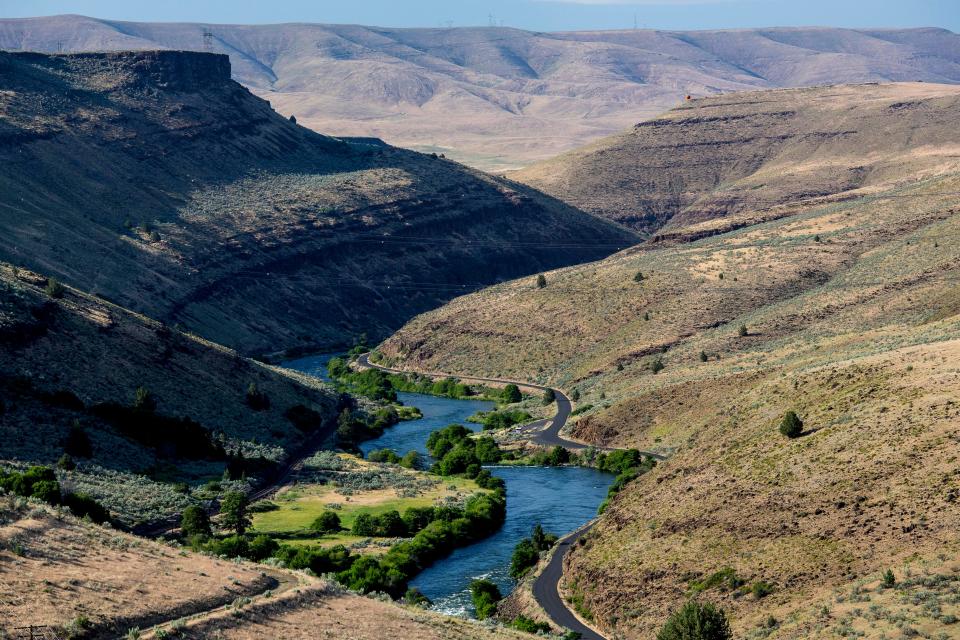
Most people in Oregon are familiar with the Deschutes River, a 252 mile stream that rises in the Cascades and rolls through Bend. The lowest half of the river — 100 miles from Pelton Dam to the mouth of the Columbia — is the Lower Deschutes.
Centered around the outpost of Maupin, the river features big water flows even during the heat of summer, allowing for a thrilling combination of day-floats or overnight adventures run by guided outfitters and Oregon river families.
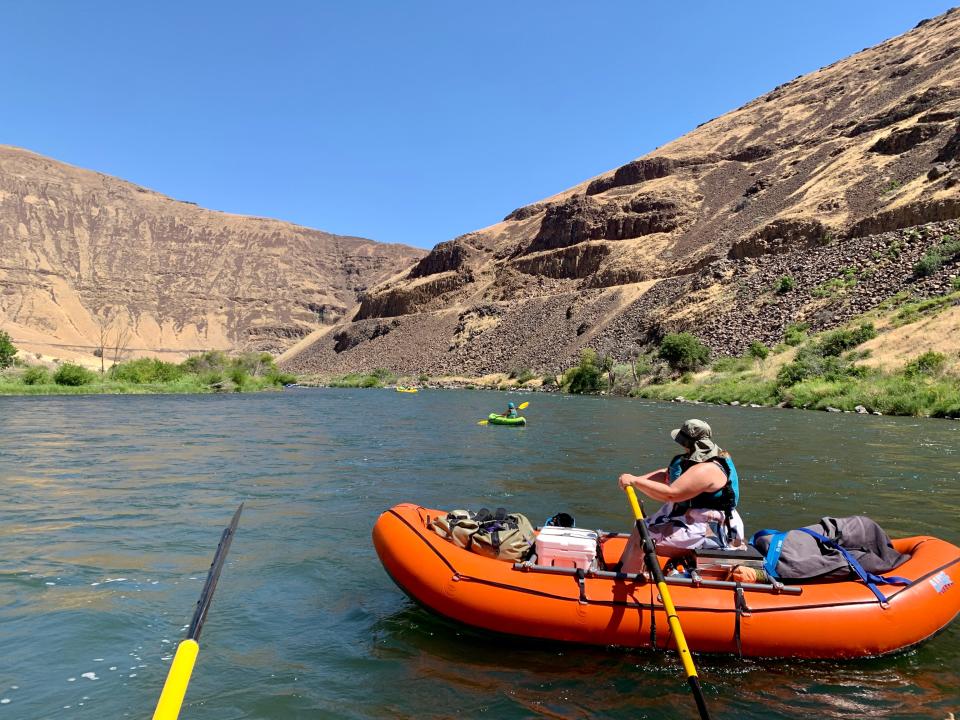
It’s a place where those with the gear and expertise load up rafts for three to four days of rapids, sandy beaches, fishing and shaded campsites. Rattlesnakes keep campers on their toes while an active railroad line clatters and bangs at all hours of the night, terrifying first-timers who awake to thoughts of an invading army.
The Deschutes is one of two Oregon rivers that offers the classic raft camping experience during the summer, with the other being the Rogue River. But the Deschutes allows far more people on the river and its permits are easy to obtain, even on summer weekends. Rogue permits can be difficult to obtain.
There are two main multi-day runs — an upper and lower section — of 40 to 50 miles each on the Deschutes. There’s also a 10 mile Maupin day-run where outfitters take thrilled visitors all summer — a stretch of booming Class IV rapids where water fights break out without warning and sunburned tourists follow rafting with burgers and ice cream in town.
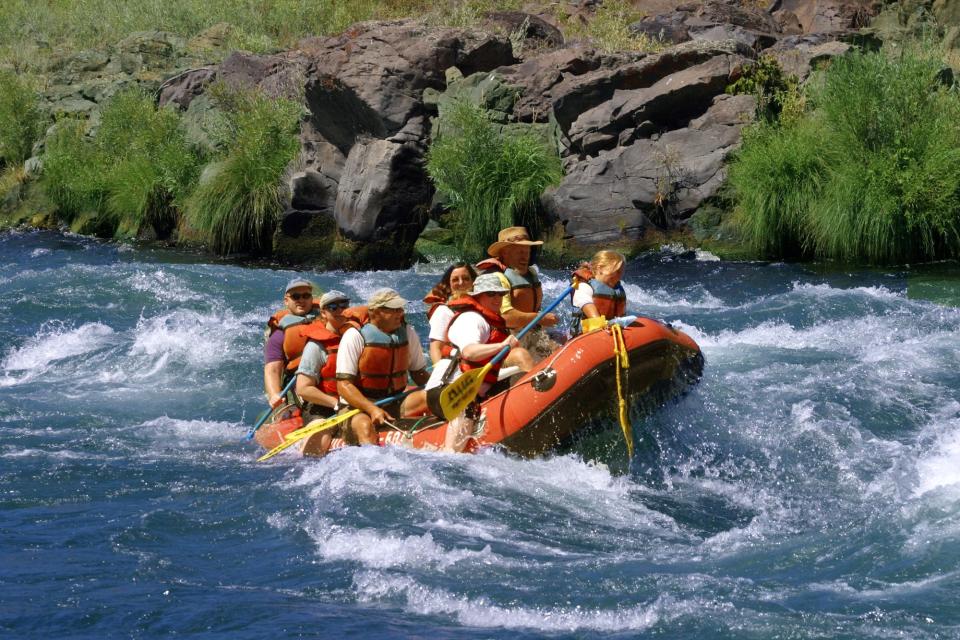
For me, being able to run an overnight trip on the Deschutes has always been a goal. But to pull it off safely, and with my daughters in tow, I needed help. That’s where Linkhart came in.
He's a longtime river-runner with a knack from bringing people together. He runs a few Facebook groups invaluable for getting information, including "Whitewater Families of PNW." And so, when he invited me to join a trip with his “river family” in early July, I was thrilled to join.
Upper or lower multi-day adventure on the Deschutes?
On the Lower Deschutes, there are two main overnight sections — one above and one below Sherars Falls. Both are similar and both rated Class III. However, the upper run has Whitehorse Rapid (Class III+/IV), a technical rapid known for bringing calamity. The lower has plenty of punch, but no rapid similar to Whitehorse.
The trip I joined was on the lower segment, which begins at Buckhollow boat ramp and runs about 42 miles to the Heritage Landing near the confluence with the Columbia. Linkhart had picked a Thursday to Sunday weekend when motor boats, which are allowed on the lowest section of the river, are prohibited.
Lower Deschutes River overview by Zach Urness on Scribd
Permits and shuttle
You need a permit to camp and float the Lower Deschutes from Recreation.gov. It’s a bit confusing at first, since you have to pick out nights you’ll be camping in the different river segments. But by planning and looking at maps, I figured it out. The price of the permit varies based on the number in your group and nights in the canyon. For example, a four-day boating pass for four people costs $86.
Another key is getting a shuttle from put in to take out. We used Linda’s River Shuttles, which costs $90 from Buckhollow to Heritage Landing.
A toilet system is also required to be on the Deschutes — everything needs to be packed in and packed out.
Finally, it was time to get on the river.
Rapids and railroads
The lower run of the Lower Deschutes begins at Buckhollow boat ramp, where boats slide onto sparkling water and push off for a trip that’s usually between three and four days.
Just below the boat ramp are two features that are a big part of the journey — rapids and railroad tracks. The first two rapids are Trestle Hole (Class II+) and Wreck Rapids (Class III). The first is named for a railroad bridge, while the second is named for a tragic railroad accident. At this site, in September 1949, a miscalculation resulted in a head-on collision between two trains.
The railroad is a unique feature of the Lower Deschutes. On the river, it often feels as though you’re in isolated wilderness, floating quietly through the desert mountains, only to have a train come clattering past.
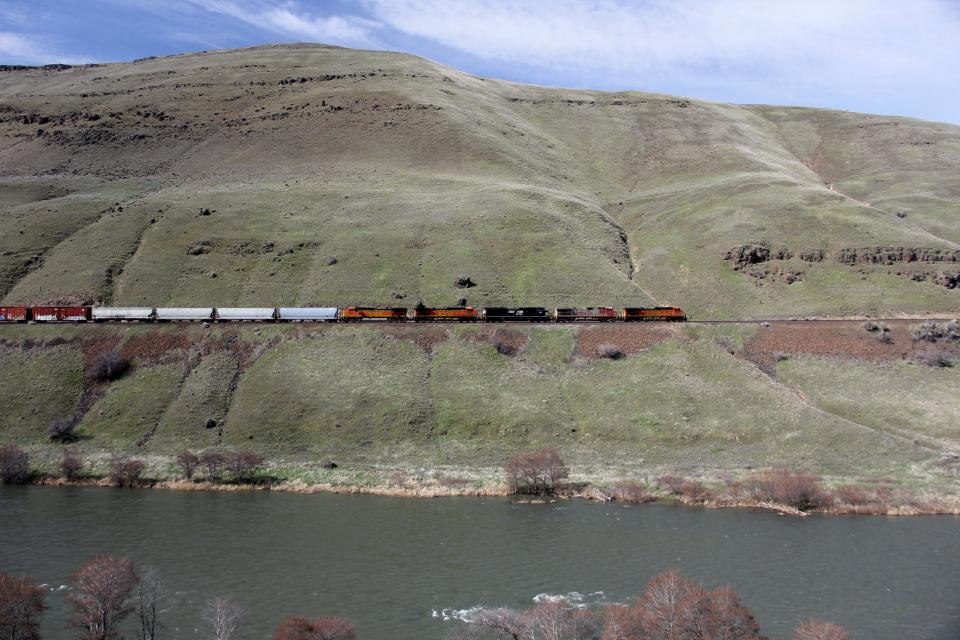
It’s fun to imagine, as you float, the railroad war that took place in this isolated canyon in the early 1900s, as two rival rail builders raced to punch through a track to Bend on opposite sides of the river.
Legends tell of the two sides shooting at each other, releasing rattlesnakes into rivals camps and exploding the other side’s equipment. The accuracy of those accounts is questionable, Martin Hansen, a railroad historian, said on a C-Span documentary, but there “was considerable mischief between the two sides.”
The legacy is twofold. First, the side that lost the railroad war left a hiking and biking trail behind, and in some places what's now an access road. The other is the trains will scare the daylights out of first timers like myself. At our group’s first camp — at Beavertail Campground, where I actually met the group — a train went past overnight and woke me up in a cold sweat.
“It really freaks some people out,” Linkhart said. He said he makes sure to avoid some river camps that are too close to the tracks, including one, called Airstrip, where trains actually switch lines in the middle of the night. “You can hear the turnbuckles of every car loosen and tighten, which makes a ton of noise,” he said.
Lazy days and warm water
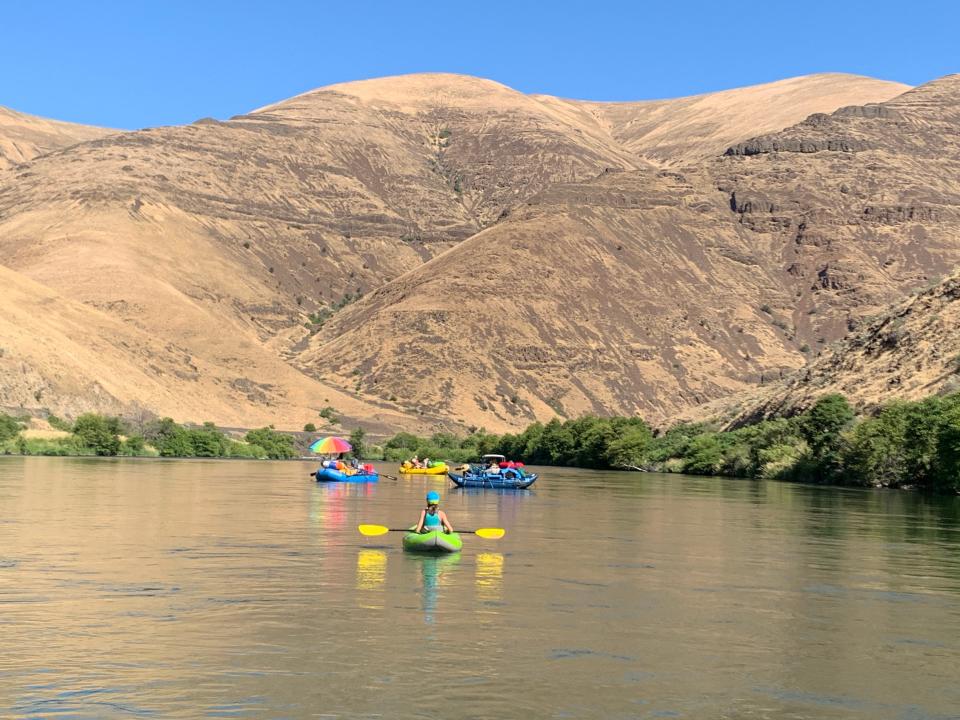
Heaven on the Lower Deschutes is floating in the hot sunshine, jumping off the raft to cool down while looking up at towering, reddish-orange rock formations that rise above the river.
“You don’t feel cold, ever,” said Jacob Linkhart, 15, who runs his own boat on the Deschutes. “You jump in the river, get out, and immediately feel warm again.
“It’s great place to swim and look up at the rock formations and down at the plants. It’s really beautiful.”
At times, we pulled the kids in inner tubes behind the rafts, bringing them over rolling waves. At others, we stopped at sand beaches to swim and splash and eat lunch.
As the day moved into afternoon, we started watching out for the perfect campsite.
Campsites of the Deschutes
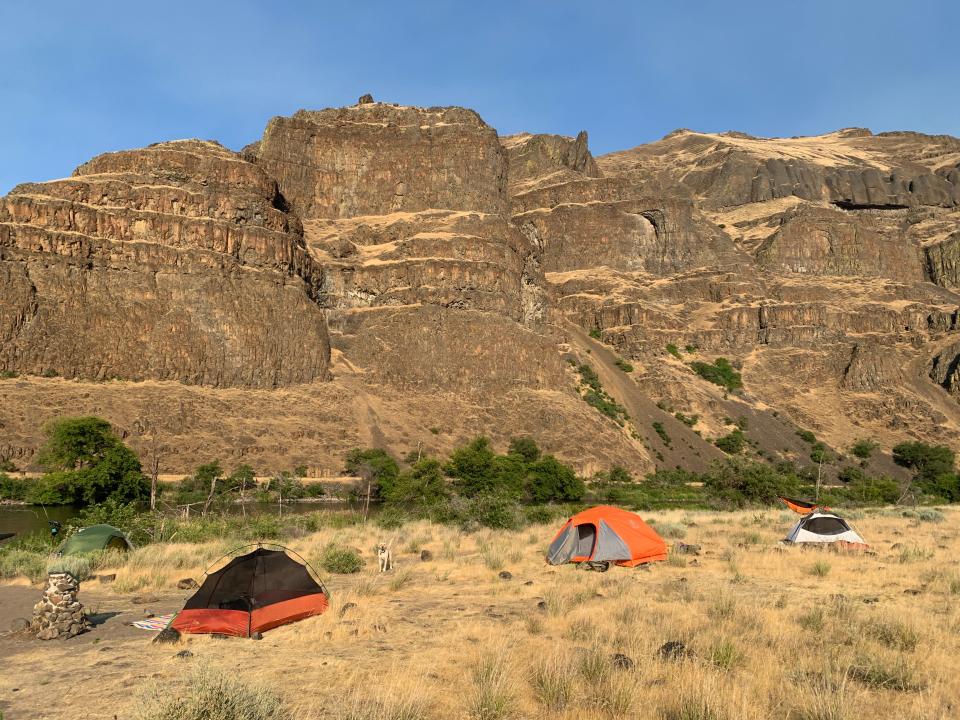
There is no shortage of people floating the Lower Deschutes, which leads to a real focus on scoring the best campsites.
There's over 100 campsites along the entire length of the Lower Deschutes, and each has its own attribute — the most important being shade. The difference between the sunshine and shade feels like at least 15 degrees, maybe more.
“I like having plenty of trees and a nice big eddy at camp,” said Emma Linkhart, 12. “On layover days, it’s nice to have a shady place by the water where we can just sit and talk.”
Beyond that, some campsites have much-beloved Phoenix composting toilets, which use sawdust to stay odor-free. There’s other highlights as well. One of the river’s lower campsites even had apricot trees that bore delicious fresh fruit.
The camp we ended up at wasn’t our first choice — that spot had been claimed — but it ended up being a lot of fun. The 2017 Substation Fire had eliminated some of the trees but we did have two small, slightly shaded beaches. We put a table in the water, in the shade, where the kids spent literal hours making multicolored rubber band jewelry. And the best part was we could float in inner tubes from one beach to the other.
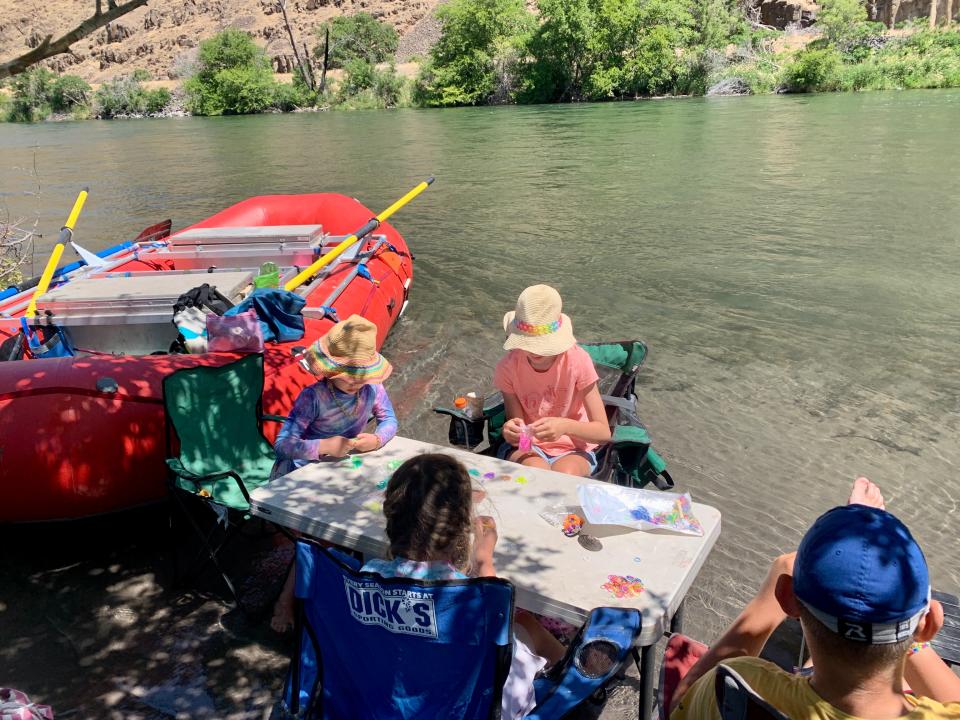
When it was dinner time at lower camp, we'd just jump in the river and float to the food.
A river family
The group we rafted with is Linkhart's “river family.” It included his actual family — wife Kimberly and kids Jacob and Emma. But it also includes a tight-knit collection of experienced rafters that each bring something to the group — a fancy toilet system, top-notch cooking setup, portable shade. It’s a group with the skill and knowledge to help each other if anything goes wrong on the river, while also taking turns cooking delicious meals that came with chocolate mousse pies for dessert.
“Everybody contributes something,” Linkhart said. “When we’re all together, we don’t want for much and eat really well. It’s a wonderful sense of community in camp and on the river. The people we boat with have become super close. They really are like family.”
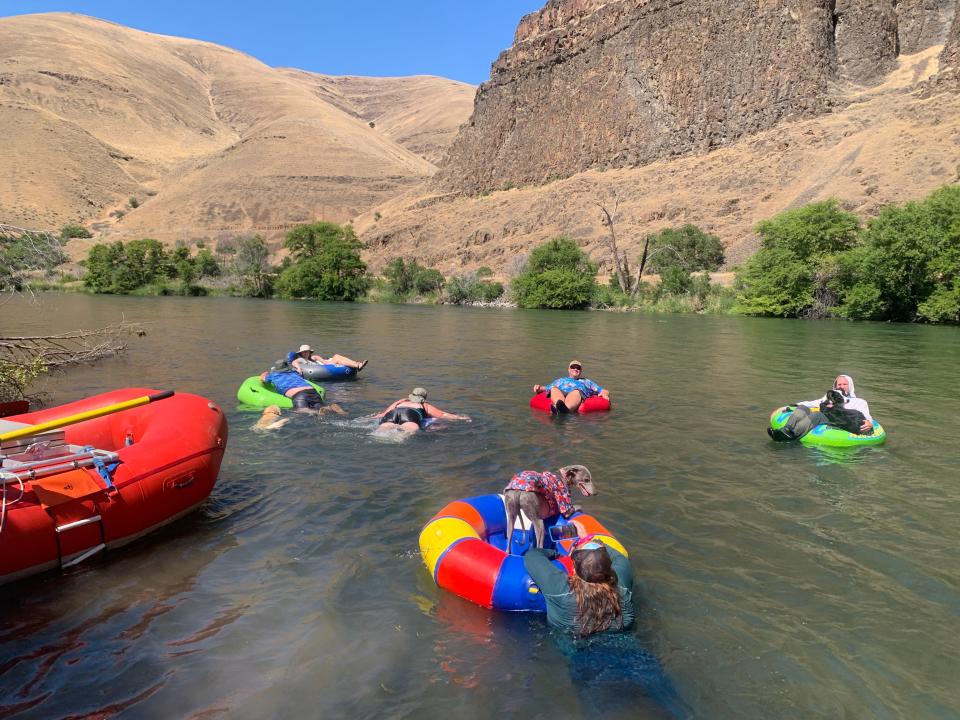
Community on the river
Having that tight-knit group certainly put me at ease as we began the last day of our float, into the largest rapids of the run and the last party of the Lower Deschutes before it flows into the Columbia.
As we approached Colorado Rapids, and saw that mountain of water rising in the distance, it was a blessing to know that should I screw up, or something go sideways, there were boats behind and in front of us ready to help.
That way, we could focus on the fun and our raft hitting that giant wave and exploding in the best possible way.
Zach Urness has been an outdoors reporter in Oregon for 15 years and is host of the Explore Oregon Podcast. Urness is the author of “Best Hikes with Kids: Oregon” and “Hiking Southern Oregon.” He can be reached at zurness@StatesmanJournal.com or 503-399-6801. Find him on Twitter at @ZachsORoutdoors.
This article originally appeared on Salem Statesman Journal: Lower Deschutes River rafting: desert sun and big rapids

